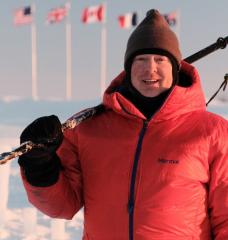
Self-Organizing Sandbars to Protect Vulnerable Coasts
MIT’s Self-Assembly Lab and Invena, an organization based out of the Maldives, are working together to create a system of underwater structures that use wave energy to create sand accumulation in strategic locations. Over time, the goal is that the accumulation of sand will grow into new islands or help rebuild existing beaches, creating an adaptable solution to protect coastal communities from rising sea levels.
The Problem
As climate change progresses, island nations and coastal regions face a growing risk from sea level rise and increased storm inundation. With >40% of the world’s population living in coastal areas, it is imperative that novel approaches to address this mounting threat are found. Typical attempts to fight storms and sea level rise rely on static physical barriers or continual coastal dredging, which try to resist constantly changing natural forces.
Growing Islands from Self-Assembly Lab, MIT on Vimeo.
The Solution
The goal of the Growing Islands project is instead to work with the forces of nature, harnessing them to build rather than destroy. Together with collaborators in the Maldives, the Self-Assembly Lab is designing, building, and deploying submersible devices that, based simply on their geometry and orientation, can function as adaptable artificial reefs. By harnessing wave forces to accelerate and guide the accumulation of sand in strategic locations, and adapting the placement of the devices to seasonal changes and storm direction, this approach aims to naturally and sustainably reshape sand topographies using the forces of nature.

Maldives Sandbars. Image courtesy of Self-Assembly Lab, MIT + Sarah Dole, Hassan Maniku.
In February 2019, the first field experiment was installed in the Maldives and data will be collected over the coming year to analyze the resultant sand accumulation. The team is looking to install a second field experiment in Q4 2019. This is the first phase of a multi-year project with various field experiments and years of data collection, all with the aim to create a system of submersible structures that can adapt to the dynamic weather and wave conditions and naturally grow coastlines. Far-reaching applications are envisioned for rebuilding and stabilizing heavily-populated coastlines and vulnerable island nations.
About the Self-Assembly Lab:
The Self-Assembly Lab is located in MIT's International Design Center and is part of the Department of Architecture. The Lab has developed a number of material and fabrication technologies including 4D Printing, Rapid Liquid Printing, Programmable Carbon Fiber and Balloon Self-Assembly. They have worked with a number of industry collaborators including BMW, Google, Steelcase, Airbus and Autodesk and exhibited work in galleries such as the Guggenheim NY, the Cooper Hewitt Smithsonian Design Museum, the Pompidou in Paris, Victoria and Albert Museum in London and Design Miami.
Self-Assembly Lab Team: Nitzan Zilberman, Heather Nelson, Amelia Wong, Emile Therault-Shay, Bjorn Sparrman, Schendy Kernizan, Jared Laucks, Skylar Tibbits
About Invena:
Invena is an organization based out of the Maldives and founded by Hassan Maniku and Sarah Dole, whose main aim is to find solutions to some of the pressing problems faced by low lying island nations through sustainable technology solutions.
Maldives Team: Sarah Dole, Hassan Maniku, Ali Amir, Mommo Maniku, Fahad Shiham, Drone footage by @AliAerials






